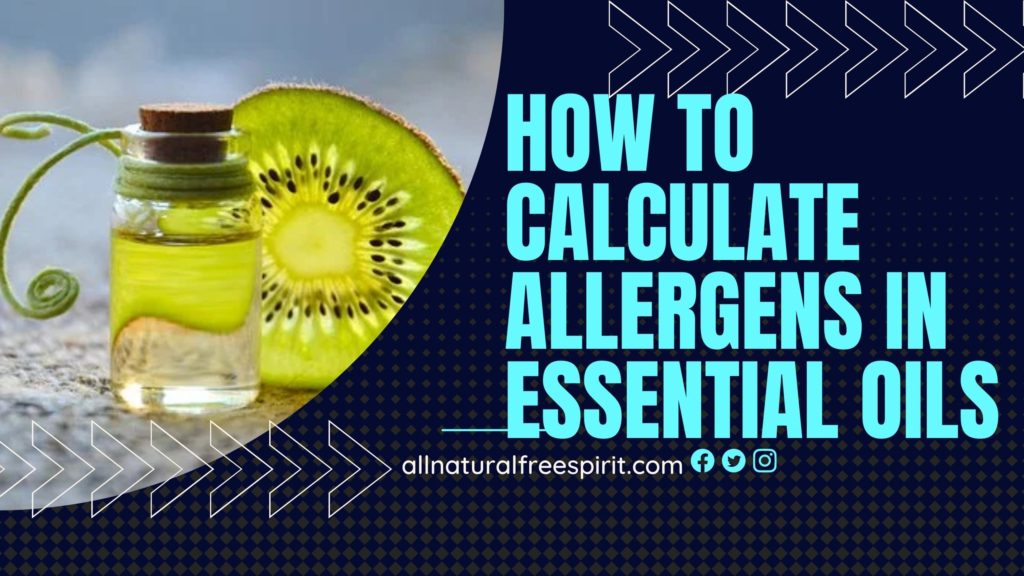Manufacturers use a variety of essential oils to scent their products. Some of these oils may cause allergic reactions in susceptible individuals.
This blog post will try and explore different ways of how to calculate allergens In essential oils.
The allergens in these oils can wreak havoc on the body, causing a range of symptoms from itchy skin and rashes to difficulty breathing and anaphylactic shock.
To protect consumers, the European Union has established strict regulations regarding labeling products that contain allergens.
These regulations require manufacturers to list the specific allergens present in their products and the percentage of each allergen.
If you are thinking of venturing into commercial production of products containing essential oils, it is important to be aware of these regulations and the process of w calculating the allergens in your products.
What are Allergens? Overview

Allergens also called “sensitizers,” are defined as “any substance capable of inducing a specific immune response or allergic reaction in sensitive individuals.”
These substances can be of natural origin (e.g., pollen, latex) or man-made (e.g., certain chemicals, drugs, and cosmetics).
Researchers have identified over 200 potential allergens in essential oils. The most common of these are limonene, linalool, eugenol, and geraniol.
The concentration of allergens in an essential oil will vary depending on the specific plant species from which the essential oil was extracted, as well as the extraction method used.
With the strict regulations in place, it is essential (pun intended) that manufacturers accurately label their products containing essential oils.
So how do you go about calculating the allergens in your product? Continue reading…
How To Calculate Allergens In Essential Oils

There are a few different methods that you can use to calculate the allergens in essential oils. The method you choose will largely depend on the specific oil you are using and the level of accuracy you need. Let’s dive right into it then!
1: Use the European Union Allergen Labeling Regulations
The European Union has established allergen labeling regulations that manufacturers must comply with.
These regulations require manufacturers to list all allergens present in their products and the percentage of each allergen.
To calculate the allergens in your essential oil using this method, you will need to know the percentage of each allergen present in the essential oil(s) you are using.
You can then use this information to figure out the percentage of each allergen in your product.
This method is pretty easy and only requires that you have the percentage of each allergen in your essential oil(s). However, it does have one major downside.
The percentage of allergens present in essential oil can vary depending on the plant species and extraction method used.
This means that, unless you are using a certified allergen-free essential oil, the allergen content in your product may not be accurate.
Read: Where to place essential oils for anxiety
2: Use an Allergen Calculator
There are a few allergen calculators available online. These calculators use information about the specific oil you are using, as well as the allergen content of that oil, to calculate the allergens in your product.
This method is more accurate than the first method, as it takes into account the variability of allergen content in essential oils.
This calculator will also give you the specific allergen content of your product, rather than just the percentage.
While it requires you to have more information about your essential oils, it is still a fairly simple method.
You can always find a good Allergen calculator with a quick Google search. You can even try out the European union allergen labeling regulations calculator.
Read: How to burn essential oils in a wax burner
3:Weighted Average Method
This method is a bit more complicated than the previous two methods, but it is also very accurate.
The weighted average process takes into account the variability of allergen content in essential oils and gives you the most accurate results.
Calculating the allergens in your product using the weighted average method is a two-step process.
First, you need to calculate the weighted average allergen content for each essential oil you are using. Second, you need to calculate the total allergen content of your product.
This way, you can be confident that your product is accurately labeled and that your customers are well-informed about the allergens it contains.
4: Use an Allergen Testing Service
There are a few companies that offer allergen testing services. These companies will test your product for allergens and give you a report of their findings.
With this testing service, you are guaranteed to have accurate allergen content for your product.
You will be required to send a sample of your product to the company for testing.
Plus, the essential oils you will be using The allergen report will be generated and sent back to you within a few weeks.
Even though this is the most accurate and reliable method for calculating allergens in essential oils, it is also the most expensive.
But If you are looking for a quick and easy way to get an accurate allergen content for your product, this is the way to go.
Read: Essential oil to reduce fever in child
Frequently Asked Questions on Allergens In Essential Oils
How much allergen is present in essential oils?
The amount of allergen present in essential oils can vary depending on the plant species and extraction method used. However, most essential oils contain 0.01-0.1% allergen content.
Is It Possible To Remove Allergens From Essential Oils?
No, it is not possible to remove allergens from essential oils. Allergens are a natural part of essential oils and are not removed during the extraction process. They can only be diluted or reduced.
Are allergen-free essential oils available?
Yes, there are a few companies that offer allergen-free essential oils. However, these oils are typically more expensive than regular essential oils. Plus, allergen-free essential oils are not always 100% allergen-free.
There you have it; if you have been looking for a way of how to calculate allergens in essential oils, then hopefully, this article has given you some methods to try.
Whichever method you choose, just be sure to do your research and calculate accurately to ensure the safety of your customers.

